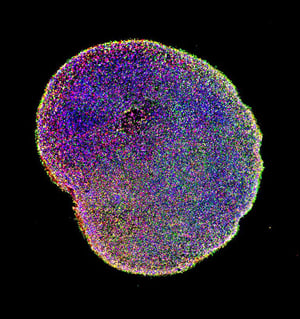For the first time scientists have managed to grow fragments of human brain tissue in the lab (in technical terms, they are called organoids), to be used as a “basis” for studying several types of psychiatric diseases and related therapies: this was achieved by researchers from the Department of Stem Cell And Regenerative Biology at Harvard University, guided by Paola Arlotta, from Italy, in collaboration with the Broad Institute of Cambridge (US). The results of this major study were published in the scientific journal Nature.
The neurobiologists followed a highly-complex method, but we can try to summarize it like this: the researchers used different stem cell lines, from both men and women, “conditioning them” using genetic engineering techniques, turning them into cortex cells (i.e. the area of the brain allocated to higher functions, such as memory and language), and sending them along a very similar path to that which happens during foetal development. Paola Arlotta and her team grew around twenty organoids in the lab and – in contrast with the results of other international teams – managed to obtain “mini-brains” that were 95% identical to one another and which developed enough to generate a wide spectrum of cell types, just like in nature during the development of the cerebral cortex.
In fact, these organoids grew really slowly: after six months they reached an average size of only three millimeters. What is important, however – according to the researchers – is having demonstrated that it is possible to produce a series of homogeneous and reliable organoids, which can then be used, as we said, to study several kinds of illnesses in the laboratory (starting with autism and schizophrenia) and their response to drugs, achieving results that can be easily compared. In other words: the researchers can grow healthy organoids and others, on the other hand, with a series of genetic mutations that cause psychiatric diseases. Thanks to the technique developed by Arlotta’s team, it will be possible to study the ways that illnesses manifest themselves and the effects of new therapies.
Currently – according to The Harvard Gazette – the team led by Arlotta is already working on organoids that reproduce autism, or, at least, the genetic mutations that are without doubt involved in this disease.
Credits photo: Paola Arlotta laboratory, Harvard University, The Harvard Gazette

